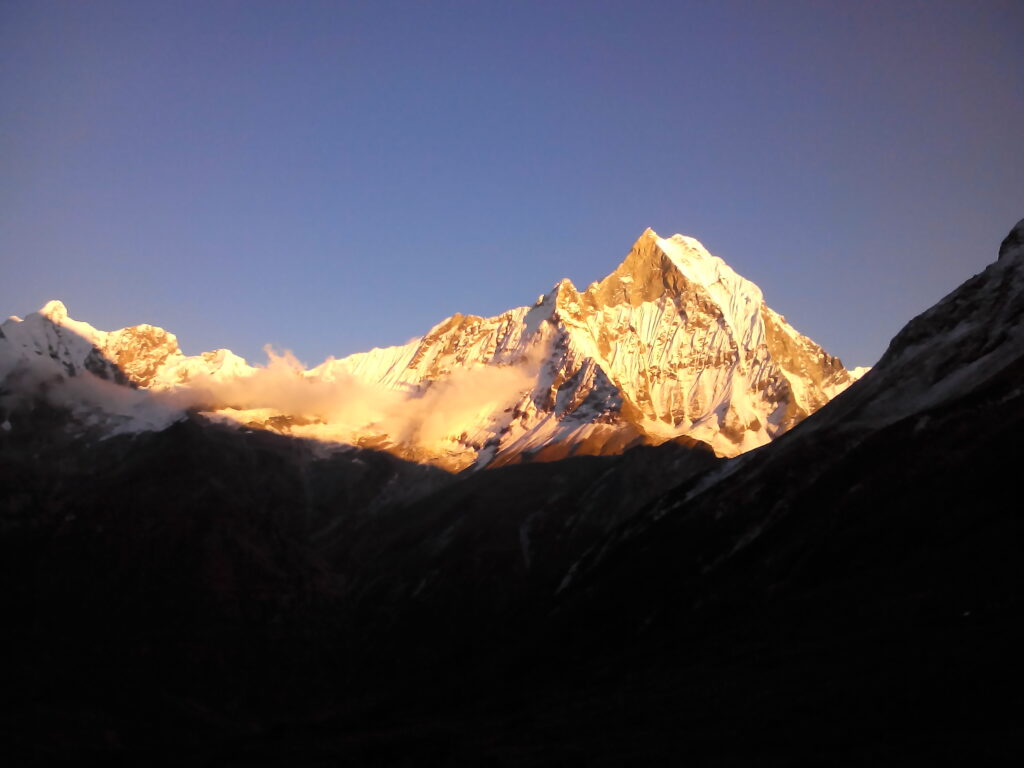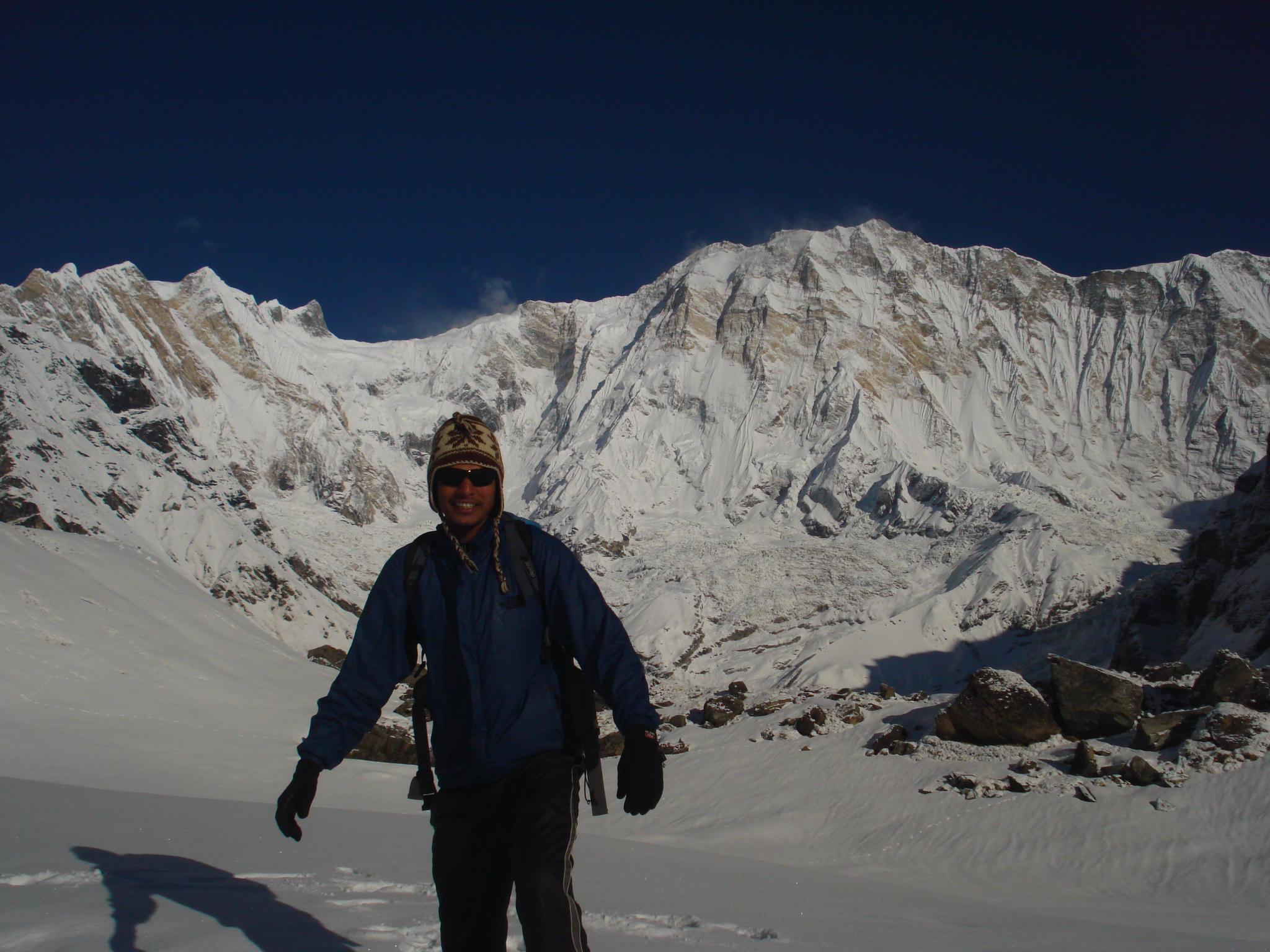
Annapurna Base Camp Trek Risk and Prevention Tips: Annapurna Base Camp (ABC) Trek is also one of the most scenic treks of Nepal but is not bereft of its share of difficulties and risks. High-altitude sickness, physical exhaustion, steep slopes with slippery trails, unpredictable weather patterns, and day trips through remote areas are all risks faced by travelers. Knowledge about the risks and the cures promises a better and safer experience.
Annapurna Base Camp Trekking: Hazards & Prevention Measures
- Altitude Sickness (Acute Mountain Sickness—AMS)
Risk
Annapurna Base Camp stands at 4,130 meters (13,550 feet), where altitude sickness is unavoidable because the air is thinner. Symptoms include:
- Headache
- Nausea & vomiting
- Dizziness
- Fatigue
- Loss of appetite
At the very least, High Altitude Pulmonary Edema (HAPE) or High-Altitude Cerebral Edema (HACE) could follow, two life-threatening illnesses.
Prevention
- Acclimatization: Do not rush. Stay extra nights at 2,500m and 3,500m before ascending higher
- Hydration: Maintain 3–4 liters daily water intake to prevent dehydration that may increase altitude sickness.
- Steady and Slower Pace: Don’t tire out. Keep taking breaks and moving slowly.
- Avoid Alcohol & Smoking: They can worsen dehydration and symptoms of AMS.
- Medicine: Use Diamox (Acetazolamide) for prevention when needed, but see a doctor first
- Descent with a Headache:
If the symptoms increase, descend a minimum of 500m with immediate medical attention.
- Physical Weakness & Fatigue
Risk
ABC Trek involves extended walking time (5-7 hours a day), steep slopes, and many stone steps, leading to muscle exhaustion and weakness. Physical unfitness may cause:
Excessive fatigue
Leg cramps and arthritis pain
Increased susceptibility to damage
Prevention
Pre-Trek Training: Start cardio practice, weight practice, and walking longer distances at least 4-6 weeks before the trek.
Proper nutrition: Eat high-calorie food with a lot of protein and carbohydrates.
Stretch & Warm-up: Stretch your legs upon beginning the trek daily to avoid stiffness.
Utilize Trekking Poles: Reduces strain on the knees and adds support.
- Slipping & Slipping Trails
Risk
The trails are slippery and wet and full of mud during the monsoon and winter seasons, and one can easily lose balance and slip.
Preventing
Appropriate Foot Gear: Wear waterproof high-grip hiking boots for better traction.
Trekking Poles: Provides extra support on slippery terrain.
Cautious Steps: Walk carefully and slowly, especially around stone steps and wooden bridges.
Contrary
- Risk of walking alone
Risk
Entering alone is allowed but increases the chances of losing one’s way, injury, or not getting timely help when needed.
Prevention
- Hire a Porter or a Guide: They ensure safety, lead through difficult terrain, and help in case of emergencies.
- Stick to Blazed Trails: Avoid taking unmarked shortcuts.
- Carry Emergency Contacts:
- Carry local rescue contact numbers and a satellite phone when venturing into remote areas.
- Notify someone: Notify family or a trekking agency about your itinerary before departure.
- Temperature Declines & Weather Disasters
Risk
- The Annapurna region sees unpredictable fluctuations in the weather, resulting in:
- Sudden snowstorms
- Heavy rain
- Night-time frozen temperatures
- Strong winds at upper levels
Preventing
- Check Weather Forecasts: Always check before ascending higher.
- Wear Thermal Layers: Use windproof jackets and gloves and thermal layers against cold.
Be prepared for setbacks: Unfavorable weather may lead to flight cancellations or longer walking days.
- Avalanches & Rock Fall
Risk
Certain sections of the Annapurna Base Camp trek are also vulnerable to rockfall and low-level avalanches like Deurali to Machhapuchhre Base Camp (MBC).
Prevention
- Pass Through Quickly: Don’t stop where it’s not safe.
- Wear a Helmet: A light helmet for extra protection where the risk is high.
- Daylight Trekking: Steer clear from these areas’ early morning or late evening when the risk is increased.
Conclusion
Annapurna Base Camp Trek is a wonderful experience but very essential to understand and prepare for the risks. By following altitude precautions, developing physical fitness, using proper trekking gear, and not solo-trekking through risky areas, you can enjoy a safer and better experience. Always listen to nature, listen to your body, and trek with sensitivity!
